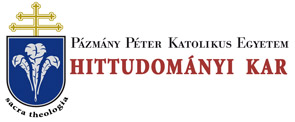Folia Theologica et Canonica 10. 32/24 (2021)
Ius canonicum
EXEGESIS ON MOTU PROPRIO SUMMORUM PONTIFICUM BY BENEDICT XVI 119 In this work I will first describe the objective facts, which will later be evaluated without any prejudice or impassioned emotions, and 1 will conclude by highlighting the aspects in which this motu proprio can be seen as a true and mature “point of arrival” for the renewal of liturgical life, the process of which was initiated by the Second Vatican Council. I. Context of the Canonical Facts Let us start by describing the facts. The motu proprio is constituted of a statement of reasons, twelve articles and one final provision, but it is not a lengthy document. Benedict XVI also set out the reasons which led him to write and promulgate SP in his Letter to the Roman Rite Catholic Bishops, signed on the same date as SP and better known for its incipit Con grande fiducia (= GF)? A short time later, on April 30th 2011, the Pontifical Commission Ecclesia Dei published the Instruction Universce Ecclesice (= UE)3 4 for the application of the pontiff’s motu proprio. Since then, the voices for and against these decisions made by the Apostolic See have multiplied exponentially, particularly via the internet, though not all the comments demonstrate the desirable knowledge and rigour expected when expressing an opinion on matters of such importance for the life and faith of the Christian people. The undeniable fact is that SP has been the only canonical norm on liturgy which has appeared during the papacy of Benedict XVI, and this should be enough to seriously ask oneself about what was written and why. Above all, and independently of its form, the structure in the articles and paragraphs of SP and the literal style of the terminology in itself tell us that what we have before us is a rule of canon law; canonical content presented to us by the Supreme Legislator exercising the rightful charisma of the Vicar of Christ. For this reason, UE affirms unmistakeably: It “constitutes an important expression of the Magisterium of the Roman Pontiff and of his munus regendi” (UE n. 8). In SP, both teaching and rule are incorporated jointly, and the adequate understanding and interpretation of them call for interdisciplinary analysis, as corresponds to the sacramental structure of the Church. Already as far back as Vatican II, in his theological writings in the field of Ecclesiology, Joseph Ratzinger was proposing solid ideas stemmed from dogmatic contemplation on the Eucharistic mystery. In this context, the “liturgy” of the sacraments, while the munus sanctificandi (c. 375 CIC) is in process, 3 Cf. Benedictus XVI, Ep. Con grande fiducia (7 iul. 2007): A AS 99 (2007) 795-799. 4 Cf. Pontificia Commissio Ecclesia Dei, Inst. Universce Ecclesice (30 apr. 2011): A AS 103 (2011) 413-420.
